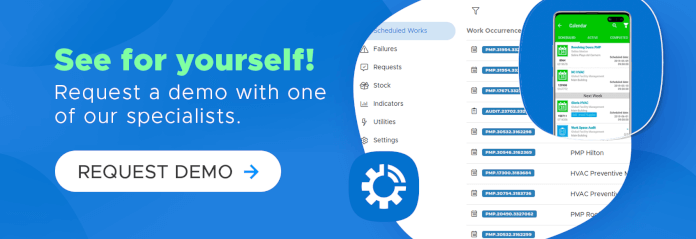What is the circular economy?
“Use, abuse, and throw away.” To put it bluntly, this has been the business model of the last decades. “Cradle to grave” life cycles have resulted in an economy of disposable products and that’s willing to compromise natural resources.
The circular economy model is different. The product life cycle must be planned ‘cradle to cradle’. When a piece of equipment reaches the end of its useful life, it should transform into a new product, generating an infinite cycle.
A good example is Sundeala, an Infraspeak customer, which produces recycled fibreboards. When they reach the end of their useful life, the panels are recycled again to create new ones. See more about how the whole circular economy process works at Sundeala.
Naturally, applying a circular model involves structural changes. One of the most important – as you’re probably guessing – is that the ‘customer’ becomes the ‘user’. As the product never reaches an ‘end’, the relationship with suppliers is constantly renewed.
What are the advantages of the circular economy?
But why should we replace the linear model with the circular one? Short answer: because it is not sustainable. The linear model produces (and scraps) at a faster rate than resources can be replenished, with all the economic, social, and environmental impact that this entails.
The scarcity and rising cost of raw materials, intensified by the pandemic, has no end in sight. The natural reserves of many metals that we use today in all kinds of technologies, such as lithium, silver, gallium, and indium, could run out within 100 years. The circular economy seems the only viable solution to avoid shortages.
However, we’re all selfish and self-centred to a degree. It’s plausible to believe that in 100 years we will find alternatives for these minerals. So let’s go straight to the point. What is the point of revamping your operating model? Which benefits can you reap from the circular economy now?
Moving to a circular economy will make us less vulnerable to external factors, minimises risk, decreases the amount of stock that’s required, maximises the use of materials, and preserves the ‘natural capital’. This resilience is, in fact, one of the premises of Industry 5.0.
Whenever the cost of collecting, processing, and reusing the product is reasonable, a circular life cycle is preferable to the linear model. And take this as evidence that the two are coming closer together: in 2021, the price of PET plastic rose above that of rPET (recycled PET) due to a shortage of materials.
But why is maintenance important for the circular economy?
The idea behind the circular economy is extending the lifetime of each part and each material. On the one hand, this leads us to reuse products over and over again. On the other, it forces us to look at the waste generated in our daily operations. And that is precisely where maintenance comes in.
Safeguarding maximum efficiency for the entire cycle comes down to ensuring reliability. Furthermore, doing so without generating waste requires us to repair rather than replace, reuse, keep equipment in good condition, and operate it under the right conditions, extending its useful life.
And, nonchalantly, we have just entered into maintenance jargon: “repair”, “reuse”, “maintain”, “extend”. A poor maintenance strategy, as we shall see later, generates waste; on the contrary, timely maintenance helps to prevent it. We’re never in neutral territory.
How can poor maintenance generate waste?
- Condition of the equipment: if the equipment is not in good condition, that will reflect on its performance and availability. For most companies, downtime is the main cause of production losses. In addition, waiting times and production defects are two of the 8 wastes of lean. Therefore, the maintenance strategy should suit the condition of the equipment, the life stage it is in, and its criticality.
⚙️ Here’s how to create an asset maintenance strategy.
- Operating conditions: temperature, pressure, and density, among other factors, can lead to faster equipment wear and tear. In turn, wear and tear can also compromise its functionality. An MIT study came to the conclusion that 50% of equipment functionality is lost due to mechanical wear, while 20% is due to corrosion. Both can be avoided with correct lubrication (i.e., proper maintenance) of mechanical components.
What are the best maintenance strategies for the circular economy?
So, here are the maintenance requirements of the new circular economy: ensuring equipment reliability, maximising asset useful life, and avoiding waste. Reactive maintenance is virtually ruled out. Preventive maintenance seems insufficient. But these maintenance strategies gain prominence:
- Condition-based maintenance, where the condition of the equipment is monitored in real time. This makes it possible to always maintain the best conditions and to resolve any malfunctions promptly.
- Total Productive Maintenance (TPM), where each employee takes responsibility for their equipment and actively participates in daily maintenance.
- Reliability Centred Maintenance (RCM), which focuses on maintaining the reliability of each piece of equipment with customised maintenance plans.
- Maintenance from a lean perspective. Not exactly a maintenance strategy, it is a proposal to apply a lean methodology to maintenance.
In addition, there are other changes coming. As the circular model spreads across all sectors and technology evolves, there are at least two changes that can make a difference in the everyday life of maintenance managers:
- Repair rather than replace: choosing between repair and replacement is never an easy decision. However, overhauling equipment, rather than replacing it, reduces the need for new parts and decreases waste. Caterpillar, through the Cat Reman program, rebuilds end-of-life equipment and offers customers “same-as-new” equipment at a fraction of the cost. So, not only should you put both options on the table – you should also take these types of programmes into consideration when choosing a supplier.
- “Digital twins”: one of the most promising technologies is digital twins of factories and other infrastructure. Digital twins can be used to test, develop, and validate production and maintenance cycles. Thus, we are able to explore and find the strategies that ensure more productivity. Digital twins can also be coupled with machine learning, predictive models, deep learning, and other technologies in Maintenance 5.0.
Maintenance plays an essential role in extending the useful life of equipment, decreasing waste, and making the circular economy cycle long and productive. However, when reliability becomes a priority, you need to adjust your maintenance strategy with that goal in mind.


